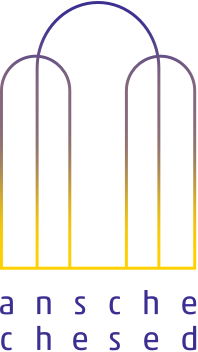This week let’s continue with the theme of common gestures that enhance Jewish worship, and make davening more than reciting words, and more like a choreographed ritual dance.
Synagogue goers are familiar with the practice of covering one’s eyes while reciting the first line of Shema. Where does this come from? The commonly cited source is the Talmud’s report [Berakhot 13b=Yerushalmi 12b] that Rabbi Judah HaNassi – known simply as “Rabbi” par excellence, the editor of the Mishnah – would “pass his hands over his face and accept the yoke of divine majesty” – that is, recite the Shema.
What did Rabbi mean by that gesture? The Talmud doesn’t say. And he’s been dead since around 220 CE, so we cannot ask him. (Although you can visit his actual burial cave, identified in the Beit Shearim necropolis in the Lower Galilee, one of the best archaeological sites in Israel. Way cool.) But over the centuries, commentators have offered views of its original purpose, or what this gesture might mean now in our own practice.
The most obvious explanation, adopted by many authorities [e.g. Shulhan Arukh OH 61.5] would be that Rabbi was trying to block out any distractions to his focus or kavvanah. Closing or covering one’s eyes would help one block out the world’s noise and induce a concentrated, meditative focus on the signal of ה’ אחד, divine oneness. That works, to a certain extent; but I resist the suggestion that the best way to experience God is to purposefully ignore the world around you. If God is One, shouldn’t we find that in the world? If we have to close our eyes, doesn’t that suggest that Jewish faith is afraid of the disconfirming evidence out there? Are we worried we won’t affirm God’s oneness if we see too much pain and ugliness out there?
The opposite answer comes from the Talmudic commentator R. Yonah Gerondi [13th C, Spain], who reports that some davveners would swivel their eyes or even their whole heads in a circle while saying Shema, to indicate that God’s oneness can be found in all the six cardinal directions: West and East, North and South, up and down. Rabbi would do this too, said R. Yonah, and covered his face at Shema because he feared people would mock him as he rotated his eyeballs in different directions. Admittedly, that might look weird. But I find in this explanation what was lacking in the previous one. The best way to testify to God’s unity and uniqueness is to look all around you, seeing God everywhere. The shortcoming of this version, on the other hand, is that Rabbi is portrayed as being so embarrassed by his spiritual gesture that covered his face so students would not see. Shouldn’t he be proud of his teaching and want his disciples to follow?
Finally, let me bring a brilliant Hasidic teaching that combines some aspects of both these two versions. R. Nachman of Breslov [1772-1810, Ukraine] was a ragged genius, whose often opaque teachings also depicted a titanic spiritual life contending with cycles of faith and despair. In one passage [Likkutei Moharan 1.65.3], he relates that in this world we see many instances of joy and pain, some which induce us to affirm God’s goodness and oneness, and others that make us suffer and leave us in doubt and despair. The trick, he said, is to keep focus on God’s ultimate benevolent order, beyond the daily chaos. If you can retain that vision, even when you suffer, you can hold on to faith.
- Nachman proposed this metaphor: when one tries to see something nearby and obvious, one can look with wide-open eyes. But when one seeks to see something elusive, subtle and very far away, one has to squint tightly. R. Nachman writes:
When one wants to see the goal of all existence, which is all good and all One, one must close the eyes, and train the gaze toward the goal. For this redemptive light of the goal is very far away – so distant that one can only see it with closed eyes. One must squint vigorously, and even hold one’s fingers against the eyes, so they are completely closed. Then one will see.
Saying Shema is like that: ה’ אחד, God’s oneness, is very distant. You cannot see it via the same methods by which you see ordinary facts. But you cannot block out the world either. You have to gaze with the most concentrated power of sight, the searching squint, to find the divine order. In this approach, covering your eyes can help you see better and best.





